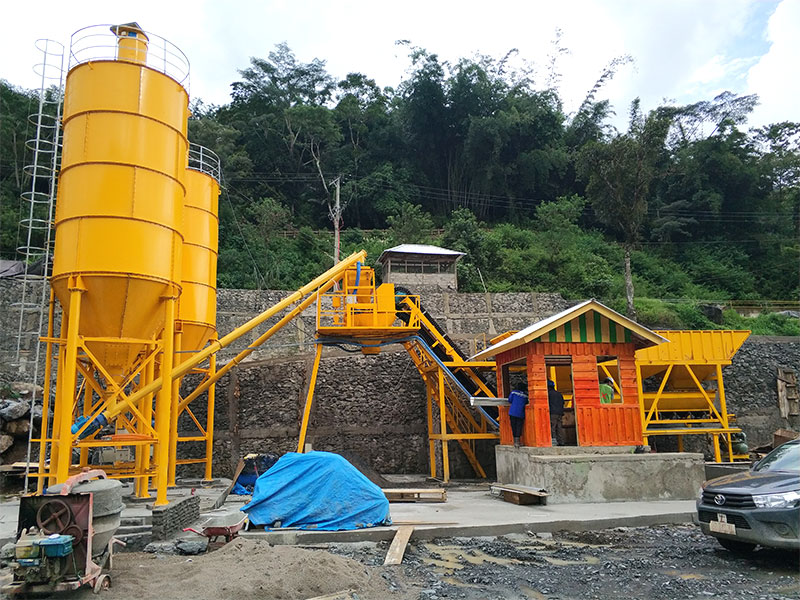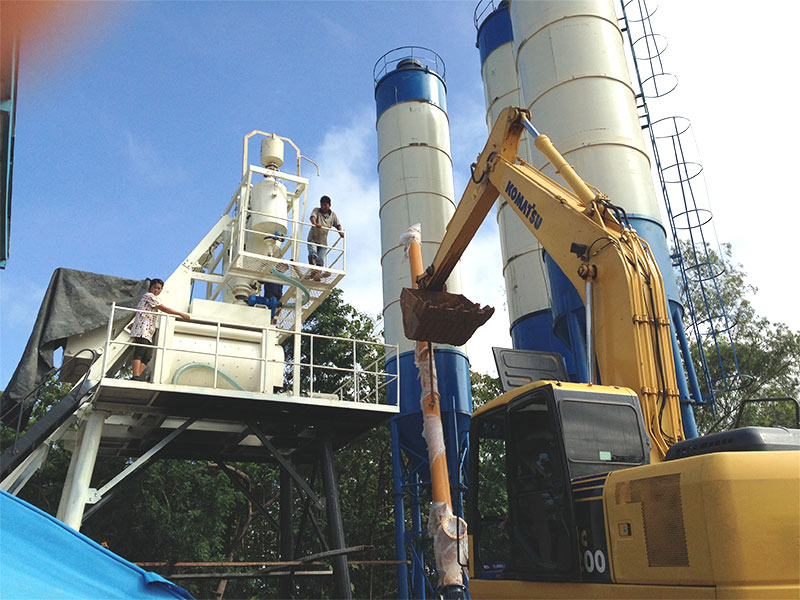Small Concrete Plant Advantages In Malaysia
The benefits of owning a Small Concrete Plant can be considerable. These machines are capable of mixing concrete and aggregates in the smallest space, and they can save you time and money. In addition to the time saved, you can handle more work orders in a shorter time, and the ability to mix concrete in a single operation will increase your business’ efficiency. Smaller plants can also be used as temporary or emergency plant for small-scale projects.
Stationary Concrete Plant
A stationary concrete plant is a small, self-contained, prefabricated system with mixing, weighing, conveying and storing equipment. The concrete is mixed in a stationary mixer before going through various auxiliary systems, including an aggregate storage silo. A small concrete batching plant is usually designed with four aggregate bins, and can be customized for different types of construction. Three weighing sensors are placed underneath each bin, and the plant has the ability to feed weighing data back into the controlling system.

The advantages of stationary concrete batching plants are numerous. For example, they can be rented by small businesses or construction companies to use on larger projects. Because they don’t move around, stationary concrete plants are more durable and are more convenient to transport. A stationary concrete batch plant can produce all types of high-quality concrete, and is ideally suited for large, concentrated construction projects. It can produce all types of concrete with capacities ranging from 30 to 200 m3/hr. Its flexibility is another advantage.
Transit Mix Plant
A transit mix plant is a device that allows you to produce high-quality concrete on the jobsite. Instead of using a batching plant for sale Malaysia, the materials are batched together and mixed at the jobsite. While mixing happens in the plant, the truck mixer is used for agitation purposes only. This means that you don’t have to worry about cement balls and can get high-quality concrete in a shorter amount of time.
A transit mix plant is more economical than a central batching plant because there is no need for additional storage space. Transit mix trucks are smaller, so they don’t block road traffic. A central mixing plant reduces fuel consumption by about 10% to 15%. Also, it eliminates slumping time, driver wash-down time, and yard waiting time. In addition, the process of transporting concrete from the transit mix plant is more efficient, reducing overall construction costs.

Dry Mix Plant
The main advantages of a small dry mix concrete plant are the cost savings and ease of operation. Mixing of the materials takes only a few minutes as compared to the time taken for wet-mixed concrete. In addition, this type of plant requires less maintenance than a wet-mix plant. Additionally, it is highly automated. This type of plant is especially convenient for long construction sites. For added productivity, it is best to work in partnership with a concrete mixer truck. In this way, the truck is able to deliver fresh concrete to the construction site.
The efficiency of concrete mixing can save up to 12% of the cement used in construction projects. The concrete will arrive at the construction site in the correct quantity without any admixtures or additional water. In addition, it will be delivered to the construction site on time. This is an advantage for both parties as it reduces the need for storage space on the construction site. In addition, it reduces the amount of wasted raw materials and eliminates the need to hire plant and machinery.
Central Mix Plant
A small concrete plant is advantageous in some ways over a central mix plant. First of all, a central mix plant will ensure that there is less residual concrete from the mixing process. Second, it can save materials and labor costs, especially if you only need to mix one batch at a time. Third, all loads will see the same mixing action. Fourth, it provides an initial quality control point when discharging concrete from the central mixer.
The third major advantage of a ready mix concrete plant is its increased production capacity. Most mixers have a capacity of 9 m3/12 yd3, and the batching time of PCC is on the order of 30 to 90 seconds. Another advantage is that the quality of the concrete is always consistent, which means it’s more consistent. It also helps to minimize waste at the job site. And last but not least, the construction process is faster and easier, which means fewer delays.